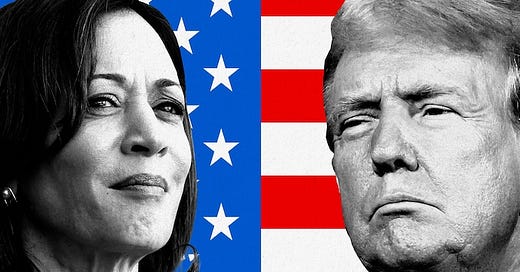The results of the 2024 presidential elections are currently dominating headlines. As any other economic stakeholder in the United States, you’re probably curious about the differences between the fiscal policies of Kamala Harris and Donald Trump.
Before considering their stances on tax, it’s important to preface one thing. And that is, based on precedence, it’s pretty clear that presidential candidates often make empty promises when it comes to their campaigns. This lack of deliverance is often due to difficulties getting Congress to cooperate. And if they manage to convince Congress, the actual effect of the candidate’s policy often doesn’t live up to its intended impact. So, remember that it’s hard to deduce what each administration will achieve.
To begin this analysis, it’s important to note that taxes are the most significant issue the next president will face. Many parts of Trump’s Tax Cuts and Jobs Act of 2017 (TCJA) expire in 2025. This act is said to spur private competition and innovation and is described as “the most sweeping tax overhaul” in American history.
Republicans and corporate leaders tout the TCJA for its $3.4 trillion in individual and corporate tax cuts. Here are the notable specifics: it cut personal income taxes from 39.6% to 37% for top earners, implemented a 21% flat corporate tax rate, and raised the Child Tax Credit (CTC). Should Trump win the election, assuming he will push to extend the TCJA and cut corporate taxes even more is safe.
Meanwhile, Democrats criticize the TCJA for disproportionately benefiting the rich. A 2018 Tax Policy Center analysis concluded that more than 40% of the benefits would go to the top 5% earners. Individuals who made over $1 million were projected to save $21,000 on average, whereas only 25% of low-income households would see any tax cuts. Their cut would be a mere $200 on average if they did. Should Harris win the election, she will likely let the TCJA expire.
Beyond the TCJA, both candidates are bringing several new fiscal policies. Trump intends to completely shift the tax model from an income-based system to a consumption-based one. How? Tariffs. His administration plans to tack on a 10% tariff on imports from all trading partners and a 60% tariff on all Chinese goods to compensate for revenue lost from his massive tax cuts.
Income and corporate tax accounts for about $2 trillion of the US government’s total revenue. In the best-case scenario, Trump’s tariff proposals are projected to raise $225 billion annually—barely a tenth of the income and corporate tax funding, meaning that this policy will worsen federal deficits. Moreover, this system is inherently regressive as poorer households spend more of their income on traded goods than richer ones. In fact, the lowest quintile of earners would lose 8.5% of their net income, whereas the highest quintile stands to gain 2%, and the top 1% would see a staggering 11.6% increase.
Furthermore, while these import tariffs may spur domestic competition, they also damage foreign trade. And if imports become more expensive, the American economy will be forced to shift production towards its weakest links (that would usually come from imports) and away from its most vital exporters, where it actually does hold a comparative advantage. Increased tariffs will also promote tax avoidance through smuggling and lobbying for tax exemptions.
In contrast, Harris’ tax plan aims to increase corporate taxes and income taxes for top earners vastly. Specifically, her administration would increase the corporate tax rate from 21% to 28% and increase the income tax rate for earners of $400,000 and above from 37% back to 39.6%, leading to a $3.3 trillion gain in revenue through 2034. This would mark up after-tax income for the lowest quintile of earners by 16.5% while lowering net income for the top 1% by 9.5% (in 2025). Additionally, Harris would increase the CTC for newborns from $2,000 to $6,000, increase the additional Medicare tax rate by 1.2%, and gift a $25,000 tax credit for first-time homeowners.
Unfortunately, Harris’ fiscal proposals look just as bleak as Trump’s. It’s estimated that her policies would jack up taxes by $4.1 trillion in the next decade, decrease long-run GDP by 2%, reduce wages by 1.2%, and lower employment by about 786,000 full-time jobs. Her increase in corporate tax would make it one of the highest among developed countries and likely stunt competition and innovation among firms. Her CTC increase would cost $1.6 trillion over a decade, and her various other tax credits would further confuse the tax code, forcing the IRS to spend more.
Ultimately, Donald Trump and Kamala Harris could not have a more different tax outlook, yet both seem to suggest poor plans. With debt becoming unsustainable and Federal Reserve Chair Jerome Powell noting that “the US is on an unsustainable fiscal path,” fiscal policy will become the most crucial fight of the next presidential administration.







